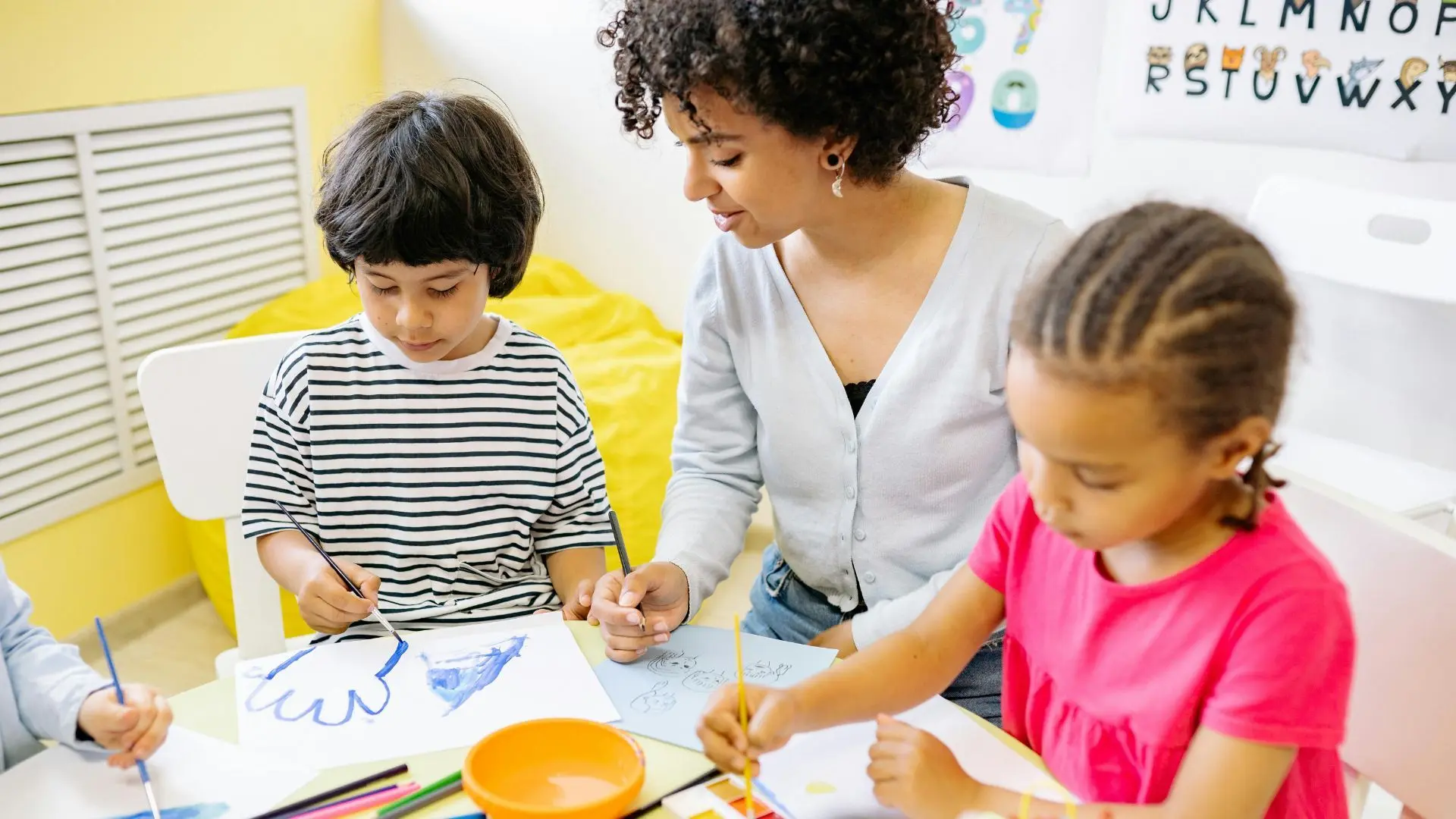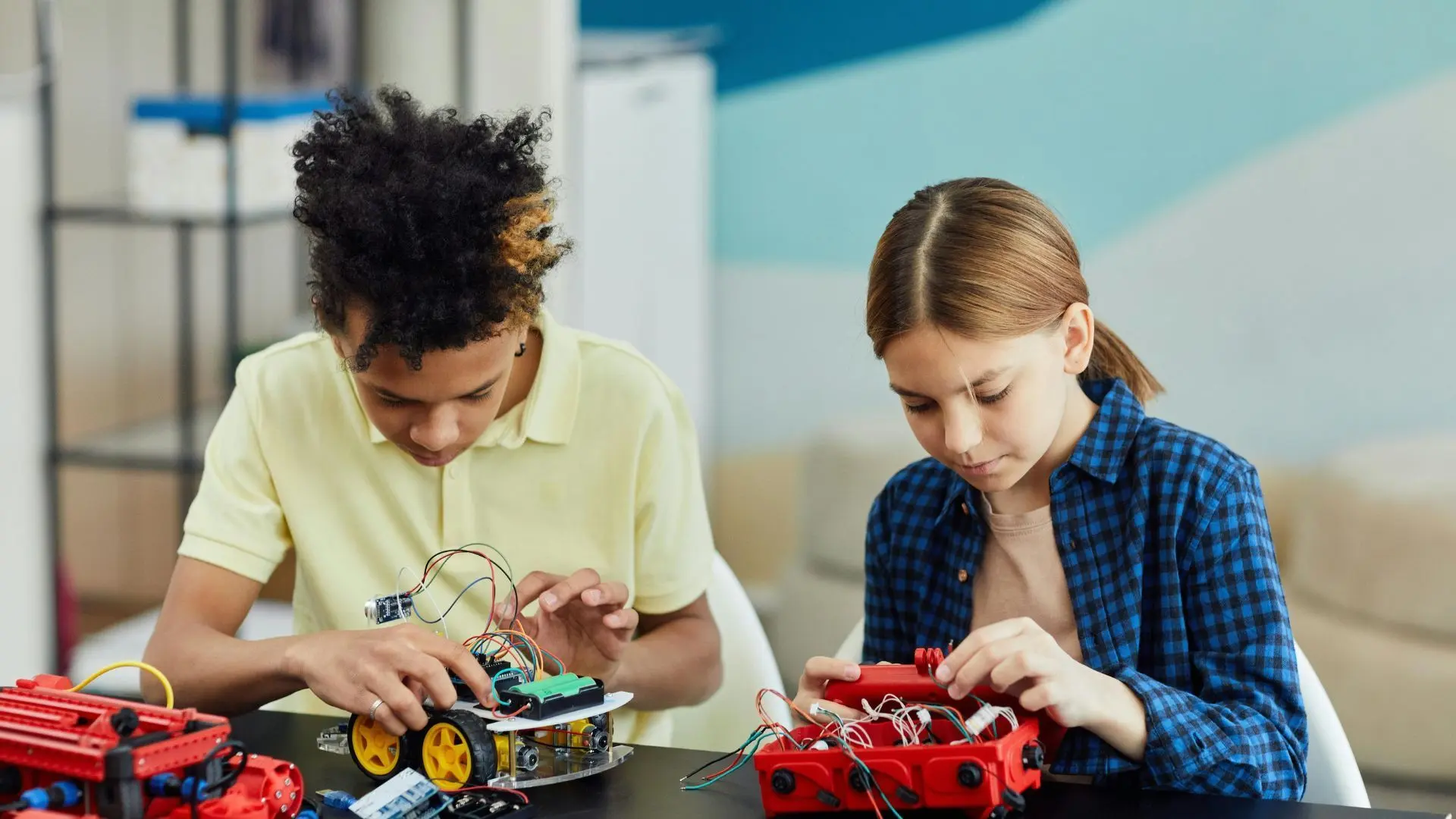Avoid the top 5 mistakes parents make as teachers. Unlock expert tips to navigate the homeschooling journey with confidence.

We parents as teachers recognize our pivotal role in our children’s educational journey. From instilling fundamental skills to nurturing a love for learning, our guidance shapes their academic success and personal growth. However, despite our best intentions, there are common pitfalls that can hinder our effectiveness in this role. In this post, we’ll explore the top five pitfalls parents encounter when acting as teachers. By understanding and addressing these challenges head-on, we can ensure that our efforts as educators are impactful and beneficial for our children’s development.
Here are the top 5 pitfalls to steer clear of:
1. Lack of Consistency

Consistency is the cornerstone of effective parental teaching, creating a stable and reliable learning environment for our children. When we, as parents, maintain consistent teaching efforts, we provide our children with clear expectations and routines, which are essential for their growth and development. Consistent parenting helps toddlers develop emotional security and trust, which in turn lessens misbehaviors. On the contrary, inconsistency in parental teaching can have detrimental effects on a child’s learning progress.
Impact of Inconsistency
1. Confusion: Inconsistent teaching methods or expectations can confuse children, leading to frustration and disengagement. This confusion can hinder their ability to understand and retain information, ultimately affecting their academic performance.
2. Lack of Progress: Without consistency, children may struggle to make progress in their learning, leading to academic setbacks. Consistent reinforcement of concepts and skills is crucial for building a strong foundation for their education.
3. Decreased Motivation: Inconsistency can dampen children’s motivation to learn, as they may feel uncertain or unsure about what is expected of them. A lack of clear direction can result in apathy towards learning and a disinterest in pursuing educational goals.
Examples of Inconsistent Teaching
Inconsistent teaching can manifest in various ways, including:
- Changing Rules: For example, allowing certain behaviors one day but not the next can confuse children and undermine the effectiveness of parental teaching. Consistency in disciplinary measures is essential for promoting positive behavior and accountability.
- Irregular Schedules: Inconsistent schedules for learning activities or study sessions can disrupt children’s routines and hinder their ability to focus and learn effectively. Establishing a consistent daily routine for home education can help children develop good study habits and maintain productivity.
- Mixed Messages: Sending conflicting messages about the importance of education or the value of certain subjects can lead to confusion and disinterest in learning. Consistency in emphasizing the importance of education and providing encouragement and support can foster a positive attitude toward learning in children.
2. Overlooking Individual Learning Styles

We parents as teachers must Understand the unique learning styles of our children because it is paramount in ensuring their academic success and overall development. As parents, we must recognize and accommodate these differences to create a personalized learning experience that caters to their individual needs.
Significance of Recognizing Learning Styles
- Optimized Learning: Recognizing and catering to different learning styles allows children to grasp information more effectively. For example, visual learners may benefit from diagrams and charts, while auditory learners may excel through verbal explanations.
- Boosted Confidence: Tailoring teaching methods to match a child’s learning style can enhance their confidence and motivation. When children feel that their needs are understood and accommodated, they are more likely to engage actively in the learning process.
Consequences of Disregarding Learning Needs
Ignoring a child’s unique learning needs can have detrimental effects on their academic progress and emotional well-being
- Frustration and Disengagement: Children may become frustrated or disengaged when they struggle to understand concepts presented in a manner that does not align with their learning style. This frustration can lead to feelings of inadequacy and a lack of interest in learning.
- Underperformance: Without proper accommodation, children may struggle to reach their full potential academically. Disregarding their learning needs can result in underperformance and a sense of failure.
Tips for Tailoring Teaching Approach
- Identify Learning Style: Observe your child’s preferences and tendencies to determine their primary learning style, whether it be visual, auditory, kinesthetic, or a combination.
- Provide Varied Resources: Offer a variety of resources and materials that cater to different learning styles. For instance, provide visual aids, audiobooks, hands-on activities, and interactive lessons.
- Encourage Self-Expression: Allow your child to express their preferences and interests in how they learn best. Encourage them to explore different methods and find what works most effectively for them.
3. Neglecting Communication and Feedback
Effective communication between parents and children is essential for fostering a supportive and enriching learning environment. As parents, it’s imperative to prioritize open communication and provide constructive feedback to nurture our children’s academic growth and personal development.
Importance of Communication
- Building Trust: Open communication builds trust and strengthens the parent-child relationship, creating a safe space for children to express their thoughts, concerns, and learning needs. Parents as teachers must cultivate an environment where children feel comfortable sharing their thoughts and ideas.
- Clarifying Expectations: Clear communication helps establish expectations and goals for learning, ensuring that both parents and children are aligned in their understanding of academic objectives.
- Encouraging Engagement: Communication encourages active engagement in the learning process, as children feel valued and supported when their voices are heard and respected.
Impact of Neglecting Communication
Neglecting communication and feedback can have detrimental effects on a child’s learning journey
- Misunderstandings: Lack of communication can lead to misunderstandings and misinterpretations, hindering effective collaboration between parents and children.
- Stagnated Progress: Without timely feedback, children may struggle to identify areas for improvement and make necessary adjustments to enhance their learning.
- Diminished Confidence: Children may feel discouraged and unsupported when communication channels are closed, leading to a decline in confidence and self-esteem.
Strategies for Effective Communication
- Active Listening: Practice active listening to understand your child’s thoughts, feelings, and concerns regarding their education. Validate their experiences and emotions to foster trust and openness.
- Regular Check-Ins: Schedule regular check-ins to discuss academic progress, challenges, and goals. Use these opportunities to provide constructive feedback and celebrate achievements.
- Encourage Dialogue: Encourage open dialogue by asking open-ended questions and inviting your child to share their thoughts and ideas. Create a safe and non-judgmental space for communication to flourish.
4. Relying Solely on Traditional Teaching Methods

In today’s rapidly evolving educational landscape, parents serving as teachers must recognize the limitations of relying solely on traditional teaching methods and explore innovative approaches to enhance their children’s learning experiences.
Limitations of Traditional Methods
- Passive Learning: Traditional teaching methods often promote passive learning, where children are expected to absorb information passively rather than actively engage with the material. This can lead to disinterest and limited retention of concepts.
- One-Size-Fits-All Approach: Traditional methods may not cater to the diverse learning needs and preferences of all children. Parents as teachers must acknowledge that each child learns differently and requires personalized instruction to thrive academically.
- Lack of Real-World Application: Traditional methods may focus heavily on theoretical concepts without providing opportunities for practical application. This can hinder children’s ability to understand the relevance of what they are learning to real-life situations.
Importance of Hands-On, Experiential Learning
Incorporating hands-on, experiential learning opportunities is essential for fostering active engagement and deeper understanding among children:
- Enhanced Understanding: Hands-on activities allow children to interact directly with materials, making learning more tangible and memorable. Parents as teachers can leverage activities such as science experiments, art projects, and educational games to reinforce key concepts.
- Promotion of Critical Thinking: Experiential learning encourages children to think critically and problem-solve in real-time situations. By engaging in hands-on activities, children develop essential skills such as creativity, collaboration, and resilience.
- Connection to Real-World Contexts: Experiential learning provides children with opportunities to apply their knowledge in real-world contexts, fostering a deeper understanding of how concepts relate to everyday life.
Examples of Alternative Teaching Approaches
- Project-Based Learning: Engage children in long-term projects that require them to investigate, explore, and solve real-world problems. For example, parents can facilitate a gardening project where children learn about plant growth and ecology through hands-on experience.
- Field Trips: Take children on educational outings to museums, parks, and community centers to provide immersive learning experiences outside the classroom. For instance, visiting a local science museum can supplement classroom learning and spark curiosity.
- Technology Integration: Utilize educational technology tools such as interactive apps, virtual reality simulations, and online learning platforms to supplement traditional instruction. These resources can provide children with access to a wealth of educational content and enhance their engagement with subject matter.
5. Failure to Adapt and Evolve

As parent-teachers, it’s crucial to recognize the ever-changing landscape of education and the necessity of adapting and evolving our teaching methods to meet the evolving needs of our children.
The Importance of Adaptability
- Dynamic Learning Environment: Education is constantly evolving, and as parent-teachers, we must be adaptable to create a dynamic learning environment that caters to the individual needs and interests of our children. Being adaptable allows us to tailor our teaching approach to best suit our children’s learning styles and preferences.
- Staying Relevant: The world around us is rapidly changing, and so too are the methods and tools used in education. By embracing adaptability, we can stay current with educational trends and incorporate new teaching techniques that enhance our children’s learning experiences.
- Modeling Resilience: Demonstrating adaptability teaches our children the valuable lesson of resilience. When they see us embrace change and overcome challenges, they learn that it’s okay to make mistakes and that growth comes from being willing to adapt and learn from them.
Consequences of Resistance to Change
Resisting change and clinging to outdated teaching methods can have detrimental effects on our children’s education
- Stagnant Growth: Failing to adapt can result in stagnant growth for both parents and children. Without embracing new teaching techniques and approaches, our children may miss out on valuable learning opportunities that could enhance their academic progress.
- Missed Opportunities: By resisting change, we risk overlooking innovative methods and tools that could benefit our children’s learning experiences. Embracing adaptability allows us to seize new opportunities for growth and enrichment.
- Strained Relationships: Stubbornly clinging to outdated teaching methods can lead to frustration and tension between parent-teachers and their children. Openness to change fosters a collaborative and supportive learning environment where both parties can thrive.
Suggestions for Staying Current
- Continuous Learning: Stay informed about current educational trends and research by attending workshops, conferences, and online courses. Engage in professional development opportunities to expand your knowledge and skills as a homeschool teacher.
- Networking: Connect with other homeschooling parents to exchange ideas, resources, and experiences. Joining homeschooling communities and online forums can provide valuable support and inspiration.
- Flexibility: Be open to experimenting with new teaching techniques and adjusting your approach based on your children’s feedback and progress. Flexibility allows for growth and adaptation in response to changing needs and circumstances.
Conclusion
As we conclude our exploration of the challenges and opportunities faced by parents acting as teachers, it’s evident that embracing this role comes with both rewards and responsibilities. Recognizing the pivotal role parents play as teachers in their children’s education is crucial for fostering a supportive and enriching learning environment. By acknowledging and addressing common pitfalls such as lack of consistency, overlooking individual learning styles, neglecting communication, relying solely on traditional methods, and resisting adaptation, parents can navigate the homeschooling journey with confidence and success. As homeschool teachers, let’s continue to prioritize our children’s holistic development, celebrate their achievements, and remain committed to ongoing learning and growth. Together, we can create a nurturing and empowering homeschooling experience that unlocks the full potential of our children.
You may also be interested in : Minecraft for Homeschool: 10 Best Ways to Boost Learning in 2024